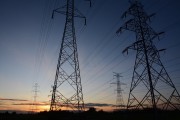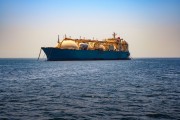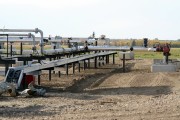If you follow the news, you know wild salmon are in trouble. This summer, only ten percent of the expected Fraser sockeye returned to spawn in the river, forcing the federal government to establish a Commission of Inquiry into the decline of the stocks. Similarly, in the Skeena River, the return was less than 50 percent.
Given the current state of salmon, British Columbians should carefully consider the risks the Enbridge oil sands pipelines pose to salmon - risks detailed in a recent Pembina Institute report, Pipelines and Salmon in Northern British Columbia.
The Enbridge pipelines would cross British Columbia's two greatest wild salmon watersheds - the Fraser and the Skeena - on an 1,100-kilometre course from the Alberta oilsands to a Kitimat tanker port.
Along the way, it would introduce two major threats to salmon.
Sediment-laden runoff from pipeline construction and testing would likely end up in rivers. Sedimentation reduces food availability, smothers spawning habitat, and irritates salmon gills.
While careful practices can reduce this risk, Enbridge's recent environmental record is poor. In Wisconsin, Enbridge paid $1.1 million in damages for over 400 violations of state environmental laws during the construction of an oil pipeline.
But even the best practices can do little to lessen the second, more problematic risk - pipeline oil spills.
The National Energy Board found that oil pipelines such as the one proposed by Enbridge fail from corrosion and stress after 28 years on average. Pipelines can also fail suddenly due to third party damage - as we saw in Northeast British Columbia - or as a result of natural events such as landslides.
A significant failure near salmon habitat in the Skeena, Kitimat or Upper Fraser river watersheds could be catastrophic and irreparable.
Enbridge's oilsands pipelines would carry oil and condensate, which are both extremely toxic to salmon. If a spill occurs, heavier oil products would sink and collect along riverbeds, slowly releasing toxins over time. Condensate is lighter and more acutely toxic. It could impact long stretches of river and cause large fish kills before evaporating after several days.
Enbridge argues that pipeline safety has improved, but it is still not risk free. Pipeline failures are inevitable. It is just a question of when, where, and how much.
Two facts are tough to refute.
First, this pipeline can't be built with zero impact on salmon habitat. The damage may come mostly from increased sedimentation in rivers and streams, but even Enbridge admits that there is the risk of a pipeline failure. In a letter published in the August 17 Northern Sentinel, an Enbridge representative stated that safety features would limit potential spills to a maximum of two million liters - suggesting spills up to this amount are possible.
Second, we don't know how much more pressure salmon can take. The recently announced federal inquiry demonstrates just how dire the situation is for wild salmon.
Just like blowing up a balloon to maximum capacity, one never knows which breath will cause it to burst. Enbridge's oilsands pipelines will add one more threat to salmon populations already under extreme pressure.
The question communities must grapple with is, given the dire state of our wild Pacific salmon, how much more pressure are we willing to subject them to?
Are we willing to pump more air into the balloon knowing it might suddenly pop?
Greg Brown is a
Smithers-based policy analyst with the Pembina Institute. Read the report Pipelines and Salmon in Northern British Columbia.





